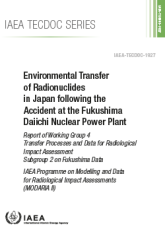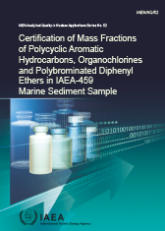Description
From 2007 to 2012, the IAEA ran a regional project on the ‘Use of Nuclear Techniques to Address the Management Problems of Coastal Zones in the Caribbean Region’, RLA/7/012. The main purpose of the project was to develop and build capacity in the use of nuclear and isotopic methods in order to understand and propose strategies for reducing the degradation of coastal ecosystems and support integrated coastal zone management in the Greater Caribbean region. This guide is a product of project RLA/7/012. It was developed by and for scientists in the region as a guide to the use of sediments to assess current and historical levels of pollution in coastal areas (over roughly the last hundred years) by studying sediment cores dated using the radionuclides 210Pb and 137Cs.
More Information on reusing IAEA copyright material.
Keywords
Guide, Use of Sediments, Reconstructing the Pollution History, Coastal Areas, Regional Project, Use of Nuclear Techniques, Management Problems, Coastal Zones, Caribbean Region, Build Capacity, Isotopic Methods, Reducing Degradation, Coastal Ecosystems, Integrated Coastal Zone Management, Scientists, Historical Levels of Pollution, Last Hundred Years, Sediment Cores, Radionuclides, 210Pb and 137Cs, Sampling Design, Project RLA/7/012, Surface Sediment Samples, Historical Analysis of Pollution, Recording Information, Specific Characteristics, Sampling Strategy, Coding, 210Pb Dating, Retrospective Analysis, Study Sites, Supplementary Files, Keeping Records of Samples, 210Pb Chronology, Tests, Disturbed Cores, Recommended Analyses, Analytical Quality Control, In Situ Parameters, Collection Forms, Moisture Analysis, Loss on Ignition, Regional Events
Related publications

2024

2020

2020

2019

2018

2018

2018

2017

2017












